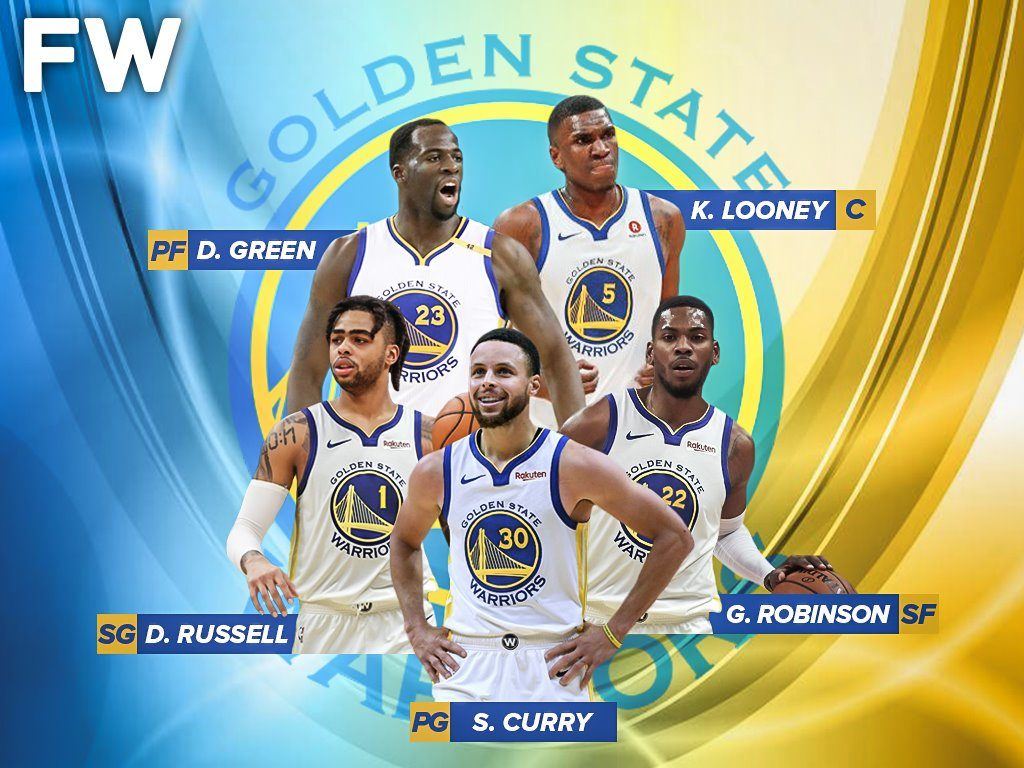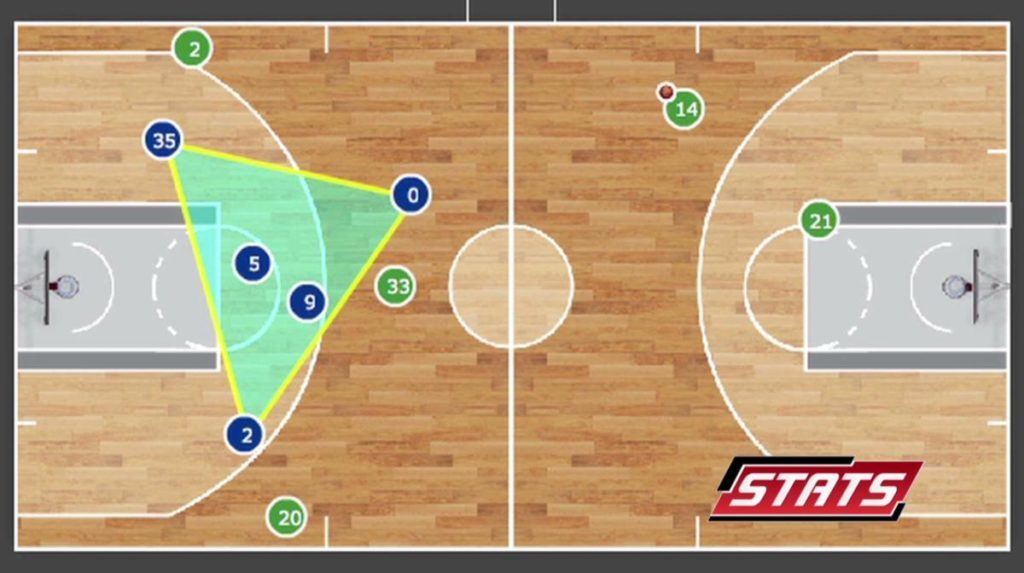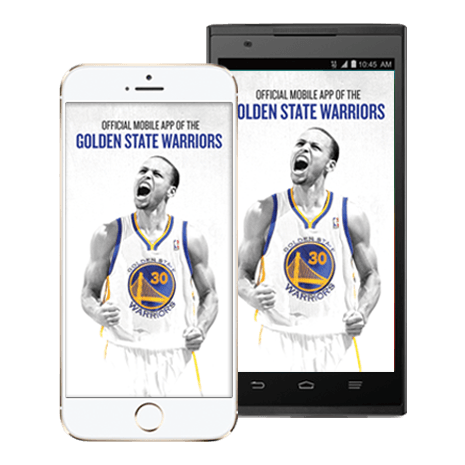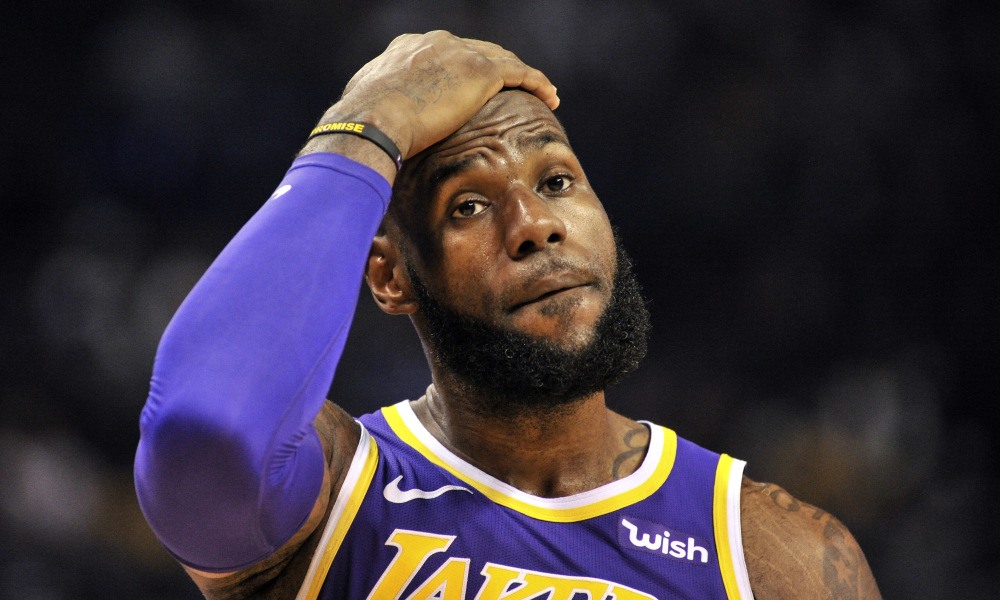MoNBAll

🏀🏀🏀 Why are the Golden State Warriors so successful? Some say it is due to Steph Curry. Others say Steve Kerr is the mastermind behind the success. Ask Curry and Kerr, and they will tell you how sports analytics made the Warriors what they are today 🏀🏀🏀
2019-20 season predicted lineup
Digital transformation has taken the world of basketball by storm, and as some teams have shown in the last decade, there is no looking back. The effect of digital transformation on success of the sport is particularly evident in the NBA (National Basketball Association), where franchises have been digitally disrupting themselves to enhance the quality of sport, while increasing user engagement.
The NBA was the first American league to use player tracking in every game by installing SportVu cameras in every arena, and making this augmented database available to clubs. In addition to sports analytics, the NBA has wholeheartedly embraced the social media wave, and is constantly looking for ways to enhance the fan experience. The recent partnership with NextVR to deliver a more immersive experience to fans is only one of many digital media strategies being implemented.
Among the stalwarts of digital transformation within the NBA are the Golden State Warriors, who have, in recent years, magically transfigured the face of the sport. Some of the key elements of digital transformation they have incorporated into their strategy are as follows [1-6] –
- Geospatial tracking with optical technology
- MOCAP (with machine learning and AI) analytics
- Fitness tracking with wearables
- Digital marketing (both inbound and outbound)
- ‘Agile’ methodology and rapid feedback loops
SportsVU tracking – player locations and heatmap
The Warriors were one of the first six teams to pay for SportsVU tracking and actively used it to inform gameplay and roster strategy. SportVU tracking enables monitoring and measuring spatial positioning of every player with the use of advanced cameras at 25 frames per second, and subsequent MOCAP analytics allow a more insightful understanding of these metrics – for instance, the EPV (Estimated Possession Value) and expected points scored from a shot. Some applications of these analytical insights have been the following –
- Improved shot selection (more three-pointers and fewer two-pointers, and a team built around Stephen Curry)
- Enhanced roster selection
- Data-driven transfer negotiations
- Better squad rotation and resting schedules
- Increased team chemistry and play style
The Warriors also encouraged use of wearables to track key health and fitness indicators. This helped inform squad rotation decisions and manage player workloads more effectively, thereby reducing player injury and fatigue. Physical fitness monitoring during daily training and workouts using data from Catapult Sports wearables is supplemented by a neurological assessment of the athlete with Omegawave electrodes. The Warriors are constantly looking for new technologies that can improve player lifestyles and help increase their game effectiveness and longevity. One example is the use of Neuroon sleep masks to combat jet lag.
This digital disruption in the Warriors offices and courts extends beyond the tech. The Silicon Valley franchise has also adopted a culture organic to many tech firms in the area – collaborative and democratic, with a focus on rapid testing and iterating through an agile methodology. The minor league team of the Warriors helps pilot some of the tech, and the ones that are proven to be effective make their way up.
Another key element of the digital transformation strategy of the Warriors is their digital media and marketing play, which is rocketing them into being the most valuable franchise rapidly. Their digital revenue, spurred by an inbound marketing campaign that relies on content generation and an ‘impression-based model’, shot up by 300% only in the last year [7-10].
GSW app
While the Golden State Warriors are having a ball (pun intended), other NBA franchises are not doing so well. The Los Angeles Lakers, for instance, have not been so ready to embrace digital transformation, and they have fared poorly in the recent past. Until 2015, Lakers were the only franchise without a representative at the MIT Sloan Sports Analytics Conference, which is often regarded as the Mecca of sports analytics. Only in 2015 did they embark on the analytics and digital transformation journey, but some argue it may already have been too late. It may be no coincidence that the only team below them in the 2015 season was the New York Knicks, whose president is a ‘conscientious objector’ [13].
LA Lakers – social media following
The Lakers have also been underperforming on other dimensions of digital transformation. Their social media following has stagnated since 2015, and while part of this may be attributed to their lack of success, an unwillingness to revamp their digital media strategy is also a key component of this stagnation [14-16].
When will we learn?
While digital disruption has been pervasive in all industries and walks of life, sports has remained insulated for too long. In an ecosystem as competitive as the NBA, adoption of digital transformation techniques by one franchise necessitates adoption by the others. However, the unwillingness of key players in this industry to innovate and self-disrupt may destabilize the balance within the league. The success of franchises that actively sought digital transformation may, and should, persuade the others to follow in this path.
References –
Websites –
- Golden State Warriors use their tech advantage. https://www.cnet.com/news/golden-state-warriors-use-their-tech-advantage/
- The Golden State Warriors have revolutionized basketball. https://www.wsj.com/articles/the-golden-state-warriors-have-revolutionized-basketball-1459956975
- NBA Data Analytics changing the game. https://towardsdatascience.com/nba-data-analytics-changing-the-game-a9ad59d1f116
- Understanding the data – the Golden State Warriors and the role of analytics. https://the-cauldron.com/understanding-the-data-the-golden-state-warriors-and-the-role-of-analytics-37c1b387c7b1
- How analytics drives the Golden State Warriors. https://chartio.com/blog/how-analytics-drives-the-golden-state-warriors/
- Golden State Warriors – Data Science. https://dataconomy.com/2017/07/golden-state-warriors-data-science/
- HBS Digital – Get in the game – how the NBA uses VR to offer fans an immersive viewing experience. https://d3.harvard.edu/platform-digit/submission/get-in-the-game-how-the-nba-uses-vr-to-offer-fans-an-immersive-viewing-experience/
- HBS Digital – The Golden State Warriors – Data & Talent = Heart. https://d3.harvard.edu/platform-digit/submission/the-golden-state-warriors-data-talent-heart/
- Golden State Warriors shoot to augment fan experience with digital tech. https://www.cio.com/article/3273105/golden-state-warriors-shoot-to-augment-fan-experience-with-digital-tech.html
- New digital strategy for Golden State Warriors. https://www.forbes.com/sites/kurtbadenhausen/2018/02/23/new-digital-strategy-for-golden-state-warriors-pushes-revenue-up-300/#63763ec0329b
- Every NBA team’s 10-year record ranked from 30 to 1. https://www.foxsports.com/nba/gallery/every-nba-teams-10-year-record-ranked-from-30-to-1-031417
- The great analytics rankings. http://www.espn.com/espn/feature/story/_/id/12331388/the-great-analytics-rankings#nba-lal
- The Toronto Raptors – SportVU cameras – NBA Analytical Revolution. http://grantland.com/features/the-toronto-raptors-sportvu-cameras-nba-analytical-revolution/
- Social media followers of LA Lakers. https://www.statista.com/statistics/322444/facebook-fans-twitter-followers-of-los-angeles-lakers/
- LA Lakers – Social Media Analytics. https://www.talkwalker.com/industry-research/sports/la-lakers-social-media-analytics
- LA Lakers finally embracing data analytics. https://lakeshowlife.com/2015/10/22/los-angeles-lakers-finally-embracing-data-analytics/









Thanks for this, as an NBA fan this trend is certainly very intriguing! The Houston Rockets do a good job in this as well, and while it has undoubtedly served the team well, it remains to be seen if they can turn that into a championship. The one question I would have is will this be a trend that all teams will be forced to follow?
Fascinating topic, thanks for the great read. I would curious to know how exactly the optical technology identifies players. I doubt it uses facial recognition because the cameras are probably too far away to get the data granularity needed to classify objects. A quick search turned up an article that the NBA has been experimenting with putting GPS wearable devices under the players’ jerseys.
This was a really fun read – super interesting to see this deep dive into how digital is transforming sports. It’s amazing how far NBA organizations are going to optimize player performance – if we had biometrics in the workplace, there would likely be resistance from most employees. It’s also funny to think about how lots of folks in the old school like Charles Barkley have their own biases against data analytics, and rely on their own heuristics. To be fair, Chuck might not have been the optimal athlete in today’s data-driven sports world.
While I am a huge fan of the Dubs (Golden State Warriors), I did not know how advanced sports analytics had moved on from the early attempts featured in Moneyball. Some of the technologies applied here remind me of my first internship at Prism Skylabs in San Francisco my sophomore year of college, where I marketed a “heat map video app” that would create visual roadmaps of how consumers moved about a store. I learned early on that the value of data analytics comes from the application of the technology in strategic decisions, rather than just a half-hearted attempt to be more “innovative”. You have showcased how even the market of sports can benefit from trying new things and directly telling players that their movement on the field is as relevant as their presence on the field. It would be interesting to know if other teams would think that using enhanced data programs would be an unfair “advantage”, or if these sorts of technologies are the standard across other teams/sports. For example, it would be interesting to know if you can predict a player’s performance using ML tech that tracks his/her every move.